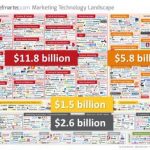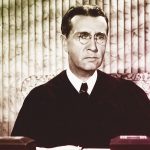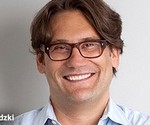Dropbox Versus the world
the brand new tech conflict is a fight to own your digital information. Dropbox’s 32-year-old CEO thinks he can thwart the arena’s most formidable titans.
March 30, 2015
“What’s fighting Google from disrupting your success?”
Drew Houston’s company may be valued at $10 billion, but here in GSB faculty West 104 on the Stanford university campus he’s being grilled like a beginner on Shark Tank. The three dozen college students in this classification, referred to as “Disruptive Innovation”, are relentless, even though he’s been invited as a visitor. every other scholar brings up what he believes is some other large possibility: “Amazon [Web Services] was once this big aggressive advantage for you when you were first starting,” he says. “however now they have got this competing Cloud drive.”
Houston is the epitome of Northern California cool. together with his full beard, hair sticking straight up, and a silver hoop piercing the middle of his left earlobe, he leans again in his chair and placidly fields the queries, regardless of how snippy. “just about any large firm, for any sufficient market, is gonna have some chips on the desk,” Houston says, explaining why he thinks Amazon and Google now have services that compete with Dropbox. “That doesn’t imply it’s gonna work.”

Houston, 32, finds himself within the useless middle of one of the vital tech business’s most fearsome turf wars. Dropbox has the dignity of being the one cloud service—and in all probability the only startup—ever to compete concurrently towards Apple ($748 billion market cap), Google ($369 billion), Microsoft ($357 billion), Amazon ($173 billion), and Tencent ($a hundred and sixty billion).
The stakes are clear: whomever controls your stuff may regulate the digital future. Over the last few years, storing and sharing data within the cloud has grow to be an almost ubiquitous habit. typical wisdom had been that cloud-based totally storage used to be a commodity trade, a digital file cupboard. however a better metaphor for the potential for cloud-based totally storage could be a transportable office. “your whole computing atmosphere must practice you around,” explains Houston. “Your financial records, your health information, your song playlist . . . the rest that’s ‘mine.’ It’s a sexy long list.” higher but, you should eventually be able to engage seamlessly with the whole thing in that portable workplace: work on paperwork with colleagues, ship e mail, chronicle inventory. About storage, he says, “that’s roughly the straightforward section. The more interesting section is, What are you able to do with it?”
unlike his amply financed competitors, which have been all based right through the desktop computing technology, Houston has been embedded in the cloud for eight years, ever seeing that launching Dropbox in 2007. He’s now not building smartphones, holographic lenses, or self-riding automobiles: his sole focal point is fixing the annoyances created by way of the invisible networked quilt that’s brand new computing. The cloud makes it conceivable to work from any place, anytime, but conserving the whole thing safe and in sync is a tremendous instrument challenge. Our financial system’s team of workers is more and more impartial, cell, and flexible, and the line between work and home continues to blur. the normal design of industry computing was once now not built for how we work today. “[Employees] are principally pronouncing, ‘I wish to get my job achieved,’” says Maureen Fleming, a VP on the analyst agency IDC. those staff will gravitate to whichever carrier makes it easiest for them to do so.
nobody yet dominates the brand new world network, however Dropbox simply could also be the most adroit cloud firm on this planet, the one that has solved extra problems for its customers than any other. That’s why Dropbox isn’t just surviving its onslaught of competition, but is flourishing. the company says it has more than 300 million users and four million companies using the service. consistent with IDC, Dropbox owns 27% of the patron market for file-syncing and sharing paperwork, more than Microsoft and Apple. additionally it is the most well-liked file-syncing and sharing provider utilized by businesses. greater than a hundred,000 organizations, together with Hyatt, below Armour, and Spotify, pay $15 per worker per thirty days for Dropbox for trade, whereas a tiny fraction of its shoppers pay $99 per year for the professional provider. Our conservative estimate of all these paying consumers (assuming five staff in each business and 1% of shoppers) places Dropbox’s revenue at approximately $450 million annually, which is why the corporate is rumored to be going public ahead of too long.
a possible IPO is simply one of the vital many reasons 2015 is a very important yr for Dropbox. Houston is already rolling out new options that fortify Dropbox’s utility, letting users do things comparable to store any file inside an iPhone app to Dropbox with two taps, and edit place of work paperwork with no need to avoid wasting them to a pc. These new additions will likely be a test: of Houston’s bet that Dropbox is a business and no longer in simple terms a feature; of Dropbox’s ability to remain carefully concerned about solving customer issues at a time when it’s rising madly; and of Houston’s skill to fend off his competitors’ cloud initiatives.
toward the tip of the Stanford class, another future disrupter named Jordan bluntly asks Houston, “What made you the correct particular person to start Dropbox in the first situation?” within the jargon of Silicon Valley, he’s asking about what’s referred to as founder-market fit. Why, Jordan wants to understand, does Houston have more than a puncher’s probability in opposition to Amazon, Google, Microsoft, and the rest?
the first time I interviewed Houston, roughly 4 years ago, he was once a younger, satisfied-go-fortunate startup founder, recounting with charm and ebullience the story of the day Dropbox acquired its first main funding from Sequoia Capital, and the way he had clicked “refresh” on his laptop time and again so he could watch his bank account rise from $60 to $1 million. This time round he’s extra guarded; some white shades are creeping up in his darkish hair. We talk in a convention room adorned as if it’s situated within the cloud—cotton-ball-like subject material on two partitions, sky blue chairs—at Dropbox’s headquarters in San Francisco’s China Basin, where he presides over 1,000 workers (double remaining yr’s head count). On a dry-erase board, a chart compares the storage measurement and costs supplied by way of Amazon, Google, and Microsoft. He assessments his telephone ceaselessly.
It isn’t until we start talking product that Houston’s mood ticks up. Excited to analyze that i’m a Dropbox person, he needs to ensure that I additionally convert from the default Apple picture-management instruments to Dropbox’s model, called Carousel. “here, I’ll exhibit you,” he says, and he practically leaps toward my facet of the table to demo the way it creates a timeline of backed-up photographs, and may simply delete duplicates from a smartphone. As he starts flicking all of the approach back to 2001 to an image of himself together with his MIT Phi Delta Theta brothers, I’m reminded of the graduation speech he gave at his alma mater’s 2013 commencement ceremony, wherein he professed his admiration for people who have been “obsessed” with fixing an issue, likening them to a dog chasing a tennis ball. “each time we find the way to prevent 15 minutes to an hour, instances tons of of hundreds of thousands of people,” he tells me, “it’s, like, we retailer lifetimes of pain, daily.”
Houston’s force to mitigate eons of technology-impressed angst has been the power that’s fueled Dropbox seeing that its inception. When he was once simply 23, Houston took a four-hour bus trip from Boston to ny, planning to make use of the time to work on a undertaking. however he was stymied, as a result of he forgot to deliver the thumb-size exhausting power that held his files. figuring out he’d been inconvenienced through the sort of factor for the closing time, he wrote the very first strains of Dropbox code all over the ride.
“plenty of the startups we fund, they’re still attempting to determine what to build,” says Paul Graham, cofounder of the startup accelerator Y Combinator. “Drew knew.” In Houston’s software for YC’s summer season 2007 session, he laid out his vision: “at some point, you received’t have to maneuver your information around manually.” He defined that he’d created something that would be sure that we’d have the identical version of each file on all our computers. “It’s a very simple thing to describe,” says Graham, “but an unbelievably arduous factor to execute.”
From the beginning, Dropbox used to be almost magically easy: install Dropbox’s folder for your desktop, and with the aid of merely dragging files into it it’s essential to abruptly access them from anywhere. The simplicity inspired a nearly cultish following. every time he or cofounder and CTO Arash Ferdowsi would overhear any individual speaking about Dropbox and they’d ask that particular person about it, he or she would inevitably say, “i really like Dropbox!” or “Dropbox changed my existence!” Houston recollects. “We’d have a look at every different like, well … nice! Cloud synchronization, candy!”
abruptly individuals had an easy strategy to share paperwork, together with the kind of large recordsdata that would shuttle up the whole thing from Yahoo Mail to company exchange accounts. That simplicity has driven Dropbox ever because. it is now built-in with greater than 300,000 companies and products and services. Dropbox comes preinstalled on laptops, tablets, and Android smartphones made through Dell, HP, Sony, and Samsung. It’s a one-click on carrier on Slack, Shutterstock, and Vimeo. while it doesn’t come preinstalled on Apple products, Apple has had such a battle with its own cloud products and services that millions of its shoppers depend on Dropbox.
This ubiquity helped Dropbox make a deal final December with most likely its most vital competitor, Microsoft, whose CEO, Satya Nadella, is pursuing a “cellular first, cloud first” vision. Subscribers to place of business 365, the cloud-based model of the world’s most popular productivity suite, can now open and edit, in an instant from place of work, the more than 35 billion phrase, PowerPoint, and Excel files they’ve saved in Dropbox. “We heard loud and clear in purchaser feedback that individuals wanted get right of entry to to Dropbox,” says Kirk Koenigsbauer, VP of Microsoft place of job. (Three months later, Microsoft unfolded place of business 365 to competing cloud drives.) Dropbox positive has come a ways because January 2013, when then–Microsoft CEO Steve Ballmer belittled the corporate as a “superb little startup.”
Houston has at all times been a fierce competitor, by no means cowed by means of the technology institution. In his YC application, he predicted that Microsoft was too conflicted to ever reach the universality it favored. In Dropbox’s first video demos, he name callings Google, which used to be rumored to be engaged on a cloud carrier, code named “Platypus,” a product now often called Google drive. Houston opens a photograph of a platypus, marks it with an incredible X, and syncs it throughout devices.
Most famously, Houston rebuffed Steve Jobs in 2009, when Apple’s CEO supplied to buy Dropbox. as soon as rejected, Jobs, in keeping with Houston, retorted that Dropbox was once in simple terms a “function” that Apple would kill with its personal storage carrier. The Dropbox crew did “freak out” over the release of iCloud, says CTO Ferdowsi. however Houston assuaged everyone’s fears. “He was once in point of fact just right at calming the workforce down,” Ferdowsi says. “He was extra like, ‘this can be a signal that we’re onto one thing.’” ICloud pushed the cofounders to create much more features for consumers, including computerized digital camera uploads, a right away hit. “We felt like, howdy, we wish to transcend just syncing information,” says Ferdowsi.
Houston continues to be translating his competitive fire into products. when I discuss with in January, the team is putting the finishing touches on its new “Open” button, a method for users to read and edit recordsdata with out even downloading them. They’re additionally engaged on the Dropbox badge, a collaboration gadget to save lots of groups from “Frankenfiles,” shared documents that contain a couple of, disjointed edits. It’s a notoriously difficult problem, person who has annoyed many a consumer of Google force. “All of this looks like a little thing,” Houston says, “but every day you’ve gotten afternoons being ruined because you open an Excel spreadsheet to complete it up, and any individual 30 ft faraway from you has been editing the same thing. It’s horrible.” He says this with the emotional conviction of anyone whose heart has been broken. “Our dream is that, with Dropbox, this will have to be the primary day in a very long time that you just go house early.”
Houston is the motive force of Dropbox, but he has additionally shown the maturity to encompass himself with an outstanding community of mentors and advisers, most of whom have been counted out when faced with competition from dependent opponents. That listing contains close pal and fb CEO Mark Zuckerberg, who is known to pop into Dropbox HQ once in a while; Salesforce CEO Marc Benioff, a pioneer of cloud-based totally services; Dennis Woodside, a former Google government who served as CEO of Motorola all the way through the hunt company’s temporary ownership, and who joined Dropbox as COO in April 2014; and Travis Kalanick, the CEO of Uber. Kalanick and Houston meet regularly for dinner and drinks to share notes on managing thru an intensely competitive landscape. “In an engineering- and product-oriented organization, there are complexities when you get to several hundred or a couple of thousand employees,” Kalanick explains. “How do you create a spot that stays revolutionary whereas it scales?”
The query gnaws at Houston: how can he make sure that every new worker is as enthusiastic about ridding the sector of digital inconveniences as he is? “the large problem will probably be growing the company in a technique that permits individuals coming in to speedy stand up to hurry and make contributions,” says Woodside. It’s specifically hard for someone as obsessive as Houston. Described as a particularly palms-on “engineer’s engineer,” Houston participates yearly within the company’s Hack Week, in which developers work on individual initiatives that incessantly get fast-tracked to product standing. He’s placed his desk right subsequent to the other engineers in Dropbox’s open place of work. The day I seek advice from, a couple of half-full water jugs had been deserted in the back of three vertically placed displays whereas an open can of sour-cream-and-onion Pringles sits in entrance. “He’s gotten a lot better at it,” VP of engineering Aditya Agarwal tells me. “being able to frame problems after which counting on people to come back again with solutions.”
throughout a product assessment I observe, Houston cuts through a boilerplate recital of statistics about Dropbox badge’s early trials with questions that time and again steer the dialogue again to the user. “Are there people who dislike it?” “Have users give you any new requests?” “What different remarks do we have now?” in the middle of a brainstorming session about new features, he tries to rev things up through rattling off ideas from consumers he met on the shopper Electronics express. He can’t loosen up unless a loud, almost indecipherable clamor of concepts erupts. “You must just be capable to just like, ping the file, or ‘Yo’ it,” he jokes, sending the room into uproarious laughter along with his nod to the briefly scorching notification app. “I need to depart various blanks for other folks to fill in, each as a result of it’s less work for me,” he later tells me with a smile, “and because it’s one thing for folks to debate.”
Houston can be working hard to be sure that Dropbox seems like a collection of work-mates, at all ranges of the corporate. It’s a philosophy that appeals to many Dropbox workers. On a cold evening in San Francisco’s monetary District, Ilya Fushman, head of industry and cell merchandise, and Agarwal sign up for Houston and me for dinner on the Battery, an unique restaurant and personal club. despite the posh environment, Fushman and Agarwal wax poetic about the egalitarian tradition Houston and Ferdowsi have created. “It’s truly exhausting to pull off creating an surroundings of fellow workers,” says Agarwal, a former engineering director at fb who oversaw the development of its news Feed. “We cling ourselves in charge to expectations, and at a bunch of companies, that finally ends up being centralized. Drew’s my boss, but I choose to think of him as a peer and good friend.”
one way Dropbox encourages a distributed feel of accountability is by means of giving new hires hefty duties. this is in particular genuine of the small engineering teams brought in by means of buying startups. Houston, Agarwal, and Fushman, who winkingly consult with themselves as “Deal group 6,” have overseen greater than 20 such acquisitions previously three years, and Houston notes that the vast majority of these acqui-hires still work on the company. “They prove with a bigger playground than they had ahead of,” Houston says. for example, Gentry Underwood, cofounder of the favored Mailbox electronic mail app that Dropbox got in 2013, is now head of design. It’s a strategy that comes in an instant out of the Mark Zuckerberg playbook.
Dropbox badge, which is expected to launch this month, is a manufactured from exactly this mind-set. the theory used to be initially advised by means of Max Belanger, an intern. “I’m like, ‘Dude, it’s no longer conceivable. No, don’t try this,’” Houston says, laughing. Belanger stuck together with his obsession and proved its feasibility anyway. He’s now a full-time engineer.
sustaining a peer-oriented, obsessively centered company is ready to develop into more challenging than ever. The cloud is now the freshest, best sector of know-how innovation. Amazon has rebranded its cloud service, giving it the extra consumer-pleasant label “WorkDocs” and including e-mail administration, the ability to store and share files up to 5 TB, and cellular apps for each Android and iOS. In February, Apple launched a slicker, cloud-focused substitute for iPhoto on OS X. And most likely most menacing of all, Microsoft’s cellular and cloud-primarily based productiveness mandate is starting to repay. the company is set to garner about $5.5 billion in annual sales of its cloud-based services and products. In simply two months, Nadella spent $300 million to obtain Acompli, an app that anchors Microsoft’s rejuvenated Outlook app, and sunrise, a popular calendar app. Even Houston’s friend Zuck may just prove to be a rival—his company is testing fb for Work.
With the elevated competition comes a brand new more or less glare. The antisurveillance crowd inveighs in opposition to widespread cloud-based services; most recently, Edward Snowden warned the public to “do away with” services like Dropbox and Google drive, claiming that they didn’t provide sufficient privacy options for customers or advocate on their behalf. (Dropbox’s addition of former Secretary of State Condoleezza Rice to its board ultimate yr did little to quell fears.) the attention ramps up the pressure to get every element proper. “Dropbox just can’t ever screw up,” Ferdowsi admits. “If we ship out a model of Dropbox that deletes data erroneously, at scale, it’s roughly the top of the company.” Dropbox’s offices function a blue neon sign that glows—it simply works. It’s both a intention and a continuing reminder to be ever vigilant.
Houston acknowledges a certain level of pressure. Two years in the past, he began taking what he calls “think days”—secluded, lengthy weekends in a resort in neighborhood Palo Alto or as a long way away as Maui—to escape and meditate on Dropbox’s position. He often returns with lengthy manifestos.
A pupil of tech historical past, Houston places the quandary he’s obsessing about in context. “a while ago, individuals may have put an MP3 of their Dropbox, however why would you do this now, with Spotify and Pandora?” He cites Craigslist as an example of what may happen to his company if it falls behind. “You used to see Craigslist used for the whole lot. after which suit.com takes away some, StubHub, after which Airbnb comes along. It will get unbundled. And we’re like, ‘maybe this is gonna occur to us.’ So we should try this to ourselves instead of letting anyone else do that to us.”
this is Houston’s largest issue—not Amazon, Apple, Google, Microsoft, or Tencent. He’s worried concerning the next twentysomething who wedges her means into his user base and peels off Dropbox’s options prior to he can build extra of them. His paranoia shouldn’t be with out lead to: one of his former engineers, fellow MIT alum Michael Grinich, is already gunning for Dropbox’s Mailbox together with his new email startup, Nilas.
This will get to the heart of these discussions Houston often engages in with Kalanick: “How do you make certain,” explains the Uber CEO, “that you simply don’t turn out to be the large firm that turns into rigid, brittle, and disrupted through the new guy?” Like the various purchases made by his buddy Zuckerberg, Houston’s acquisition spree is also as so much about neutralizing possible threats as it’s including to Dropbox’s talent and tools. whereas Microsoft pursued its splashy deals, “Deal staff 6” quietly added crews that construct instruments to let customers create collaborative documents and assign to-do lists; that permit designers share and work on CAD information; and that even have created a cloud-based phrase processor that Dropbox’s consumers may use as a substitute of Microsoft phrase. each feature can have chipped away at Dropbox’s utility. Now they will be integrated into Dropbox and rolled out later this yr.
Houston tells me that one of the most first things he presentations to new hires is a slide express that includes the emblems of Netscape, Myspace, RIM, Lotus, and Friendster. It almost appears absurd to me that a startup now not even a decade previous is already worried about being upended and becoming a cautionary tale. “What do these firms have in popular?” Houston asks his new acolytes. “no person wears their T-shirts anymore, excluding maybe as a Halloween costume.” There’s a stack of free Dropbox T-shirts when you enter the places of work. Houston is hell-bent on to ensure that they don’t develop into ironic garb for some Stanford trade-college scholar with his head within the cloud.
[Illustrations: Lo Siento, Aled Lewis]
fast company , learn Full Story
(232)














